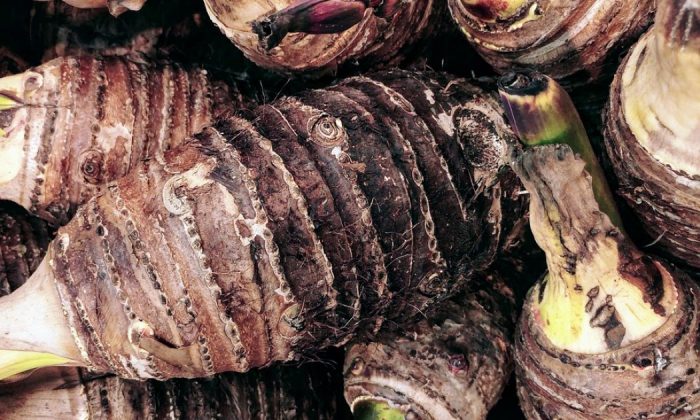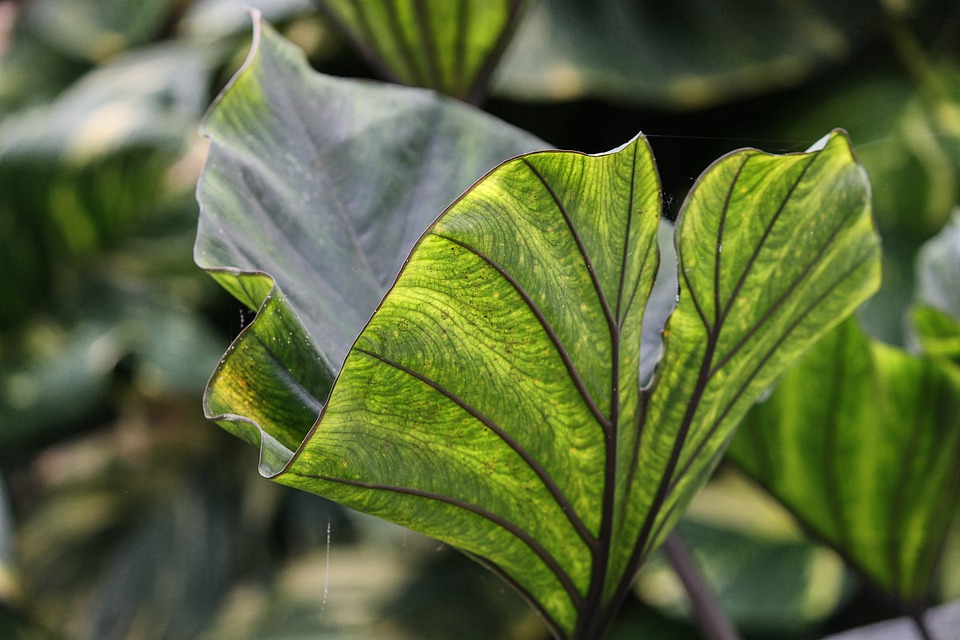Taro root rather unknown but beneficial plant

Taro root looks a bit like a beetroot. Although it is not a well-known plant, it has a many uses and yes, you can find it in stores. If you learn to like it, you do not need to buy it anymore – you can grow it in your garden or even in a flowerpot. Taro root is also known as (Colocasia esculenta) and grows in tropical and subtropical regions.
Potatoes of the tropics
Taro root is also known as the “potato of the tropics”, which pretty much tells you everything. Taro root is one of the first plants ever cultivated by mankind. Today, it is mainly grown on muddy fields in Oceania, Asia and Africa. If you would like to taste it go to Asian grocery stores or you can get it online.
Poisonous root?
If you cut the tuber you will find a white to slightly yellowish flesh. One tuber can weigh from 50 g up to 5 kg. They are only consumed cooked, because raw flesh contains a large amount of oxalic acid, which is poisonous to our body. But you do not need to be afraid. For example rhubarb also contains a large amount of oxalic acid and we eat it. Boiling kills the toxicity – but make sure to pour the water out, do not use it.
Consuming tubers
Well, you consume tubers just like potatoes. You can fry them, boil them or bake them (the taste is similar to roasted edible chestnuts). You can prepare soups out of it (cooking must be done separately, as mentioned earlier), make salads, porridge, but also sweet desserts. Flour or starch is made from dried taro root. Young leaves are rich in vitamin C and are used similarly as spinach.
Photo: Pixabay
Growing is not easy…
Taro root comes from the tropics and it needs humidity and heat and creating these conditions in our garden is not easy. A good idea is to grow it in containers as you need to maintain temperature of around 16 °C even during the winter. You can use a larger tuber for planting – cut them into pieces according to the rings and plant them with the eye facing upwards. Soil should be a mixture of river sand and ordinary soil. You will need to make a tiny greenhouse to maintain sufficient temperature and humidity. Place it in a warm and bright place, but avoid direct sunlight.
Transplanting
If you used a small flowerpot the roots will fill the entire space rather quickly and you will need to transplant the plant into a larger pot. The soil must be constantly moist. As soon as the leaves begin to wilt – with the arrival of the first frosts, you can start harvesting. roots. Clean tubers of soil and store them in a dry and dark place (you know, just like regular potatoes).
Preview photo: Pixabay

Gardening is my hobby, I have a lot of experience and I am happy to share it.









0 comments